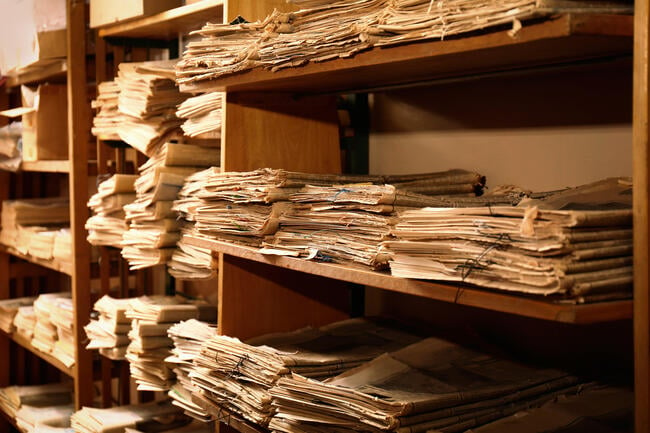You have /5 articles left.
Sign up for a free account or log in.

Liudmila Chernetska/iStock/Getty Images Plus
American higher education faces a barrage of existential threats, and—much like at other times of crisis in American history—institutions across the country are banding together to meet the moment. While lawyers and lobbyists advocate on behalf of colleges and universities in Washington, those of us farther afield are trying to circulate information and collaborate on communication strategies.
One increasingly common call to action I have heard over the past few months is for colleges and universities to make better use of the data available to them. However, the opinion pieces and reports that (rightly) urge us to make data-informed decisions almost always only discuss quantitative analysis. I have yet to see a piece that urges higher education leaders to make better use of all forms of data available to them.
We need to find ways to complement quantitative reporting with other forms of analysis, but this is easier said than done. Those of us in fields like sociology, anthropology and history worry about the very real dangers of the misuse or misinterpretation of our work. What’s more, many administrators are deeply skeptical of findings that they believe are, in the words of one of my students, “mostly vibes.” But we can no longer afford to let these obstacles stop us from drawing on other forms of expertise to help save our institutions.
In my own work, I have increasingly used my training as a historian to contextualize the quantitative reporting that I produce, and my early experiments have been more successful than I could have hoped. A forthcoming research collaboration between the Harvard Office of Institutional Research and Analytics and the Harvard University Archives will explore how to use historical analysis to better support Harvard stakeholders at scale, but it will be several years until we can share our findings. In the meantime, I hope that sharing what I have learned so far will encourage others to find their own ways to answer our colleagues’ call to action.
Before I was an historian of higher education, I was the assistant director of research at the Consortium on Financing Higher Education (COFHE), and so I am often the data guy in the room. I have seen firsthand how important it is for institutional leaders to have access to high-quality quantitative analysis, but I have also seen how overreliance on one set of methods changes the questions we think to ask. One of the reasons I sought academic training as a historian in the first place was because of my deep concern about the use of quantitative findings without historical context. When I left COFHE to pursue a Ph.D. at the Harvard Graduate School of Education, I continued to consult on quantitative research projects and taught courses on data-informed decision-making—but I also began to produce historical analysis to complement my quantitative reporting.
Once I started providing leaders with historical context, they increasingly asked for more, and even more importantly, they began to ask me fundamentally different questions. In some cases, I was brought in to work exclusively on historical analysis while the quantitative reporting was done in-house. Becoming an academic historian requires intensive training, but people from any background can learn how to ask historical questions and to challenge one of the core assumptions of academe: that “this is the way we’ve always done it.”
Historically Informed Decision-Making in Action
Our predecessors faced many of the same difficult dilemmas that we face today, including budget shortfalls, expectations to seek viewpoint diversity, challenges to programs focused on diversity and inclusion, and efforts to give faculty a louder voice in shared governance. Seeing how past leaders navigated these dilemmas can help us understand what they prioritized and why, how they defined their institution’s mission and values, and what unforeseen challenges they faced. When these findings are incorporated into reporting, they can help leaders identify additional questions to ask, people to consult and potential pitfalls to consider. For example, during the 1970s, a combination of an economic downturn and politically driven cuts in federal funding forced many colleges and universities to combine, trim or shutter whole divisions. When we face similar challenges today, someone taught to produce carefully framed historical analysis can help leaders identify additional questions they should be asking, what information is missing and who should be better represented in their discussions.
In addition to larger, institutionwide dilemmas, each office and department faces its own set of challenges that could benefit from more historical context. For example, a department anticipating enrollment shortfalls should see how their predecessors responded when faced with a precipitous drop in applications from international students. Similarly, a dean of student life facing pressure to derecognize a controversial student group should know how similar situations were handled in the past. The question is not whether we should make better use of our institutional memories—it is how to actually do so.
Where Should I Get Started?
The best places to find examples of earlier institutional dilemmas are in student and local newspapers. If you are lucky enough to work at an institution where old issues of the student newspaper are available online, this process begins with a simple web search. If you are even luckier and you work at an institution with a sizable archive, archive staff can assist you in unearthing the meeting minutes, departmental memos and personal correspondence that will help you contextualize the priorities and strategies of past institutional stakeholders.
Even if your institution does not have an archive, old directories can help identify faculty, staff and alumni who lived through periods of uncertainty. Talking to faculty emeriti and alumni can be helpful, but former administrators, and especially those who kept the meeting minutes and took dictation, have a much better idea of how our institutions developed.
Whom Can I Ask for Help?
A historian’s most beloved companions are the archivist and the research librarian. Schedule a half-hour meeting to talk through what you are looking for and they can help you get started. If you do not have time to dig into the archives yourself, reach out to a colleague in the history department to see if they can recommend a student to pull together the materials you need. If you still strike out, reach out to the editor of your student newspaper to see if anyone is interested. If your time is too constrained to find research assistants, the people in the dean’s or provost’s offices might be able to help. If you are the provost, ask your chief of staff!
Answering the Call
We expect our students to leave our institutions with a broad enough education to be able to approach a problem from multiple angles, so why aren’t we holding ourselves to the same standard? Quantitative analysis should inform our work, but there are questions that cannot be answered solely by a statistical software package or a machine learning model. Breaking through long-standing assumptions about what counts as data-informed decision-making is a daunting task, and what has worked for me may not work for you. But in these interesting times, more of us need to join the fight. Our colleges and universities need all the help they can get.




